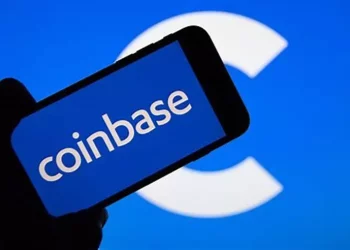Binance P2P, or Binance Peer-to-Peer, is a popular platform that allows users to buy and sell cryptocurrencies directly with each other. It operates as part of Binance, one of the largest cryptocurrency exchanges in the world. While Binance P2P offers several benefits, such as lower fees and increased accessibility, understanding its safety features and potential risks is crucial for users. This article will delve into the safety measures implemented by Binance P2P, evaluate potential risks, and provide insights into how users can protect themselves while using the platform.
Introduction to Binance P2P
What is Binance P2P?
Binance P2P is a decentralized trading platform that facilitates the direct exchange of cryptocurrencies between users. It allows buyers and sellers to create and accept trade offers for various cryptocurrencies like Bitcoin (BTC), Ethereum (ETH), and Binance Coin (BNB). Unlike traditional exchanges where trades are executed through the exchange’s order book, Binance P2P enables users to negotiate and finalize transactions directly with each other.
How Does Binance P2P Work?
Creating an Account: Users need to create a Binance account to access Binance P2P. This involves providing personal information and verifying identity.
Placing an Order: Sellers list their cryptocurrencies for sale, specifying the amount, price, and payment methods. Buyers can browse these listings and choose an offer that suits their needs.
Trade Execution: Once a buyer selects an offer, the trade is initiated. The cryptocurrency is held in escrow by Binance until both parties complete their respective parts of the transaction.
Completion: After the buyer makes the payment, the seller confirms receipt. The cryptocurrency is then released from escrow to the buyer’s account.
Security Features of Binance P2P
Escrow System
One of the most critical security features of Binance P2P is its escrow system. Here’s how it enhances safety:
Holding Funds: When a trade is initiated, the cryptocurrency is placed in escrow by Binance. This ensures that the funds are secure and cannot be accessed by either party until the transaction is completed.
Dispute Resolution: If there is a dispute between the buyer and seller, Binance’s support team can intervene. The escrow system helps ensure that neither party can cheat the other, as the funds are only released when both parties fulfill their obligations.
Identity Verification
Binance P2P requires users to undergo identity verification to enhance trust and security. Here’s why this is important:
Know Your Customer (KYC): Users must complete the KYC process, which involves submitting identification documents and verifying their identity. This helps prevent fraudulent activities and ensures that users are accountable for their actions.
User Ratings and Reviews: After each transaction, users can rate and review each other. This feedback system helps build trust within the community and allows users to assess the reliability of their trading partners.
Security Measures
Binance P2P implements several security measures to protect users:
Two-Factor Authentication (2FA): Users are encouraged to enable 2FA on their Binance accounts. This adds an extra layer of security by requiring a second form of verification in addition to the password.
Anti-Phishing Tools: Binance provides anti-phishing tools and educational resources to help users recognize and avoid phishing attempts and other scams.
Regular Security Audits: Binance conducts regular security audits and updates its platform to address vulnerabilities and enhance safety.
Potential Risks of Binance P2P
Fraudulent Activities
While Binance P2P has robust security features, there are still risks associated with fraudulent activities:
Scams: Scammers may create fake listings or attempt to trick users into making payments without delivering the promised cryptocurrency. Users should be cautious and verify the legitimacy of the offers and the reputation of the trading partners.
Phishing: Users might encounter phishing attempts where attackers impersonate Binance or other legitimate entities to steal personal information or login credentials. It is essential to be vigilant and only interact with official Binance channels.
Disputes and Resolution
Disputes can arise during transactions, and resolving them may sometimes be challenging:
Dispute Resolution Process: While Binance’s escrow system and support team help resolve disputes, the process may not always be straightforward. Users should be prepared to provide evidence and cooperate with Binance’s support team.
Resolution Time: Dispute resolution can take time, and users may experience delays in accessing their funds if a dispute occurs. Understanding the process and communicating effectively with the support team can help expedite resolution.
Market Volatility
Cryptocurrency markets are known for their volatility, which can affect P2P transactions:
Price Fluctuations: The price of cryptocurrencies can fluctuate significantly, impacting the value of the assets being traded. Users should be aware of market conditions and consider potential price changes when trading.
Transaction Delays: Market volatility can lead to delays in completing transactions, especially if there are issues with payment processing or verification.
Tips for Safe Trading on Binance P2P
Verify Trade Partners
Check Reviews and Ratings: Before initiating a trade, review the ratings and feedback left by previous users. Positive reviews and high ratings indicate a reliable trading partner.
Verify Identity: If possible, verify the identity of your trading partner through additional means. This can help ensure that you are dealing with a legitimate and trustworthy individual.
Follow Security Best Practices
Enable 2FA: Protect your Binance account with two-factor authentication to add an extra layer of security.
Beware of Phishing: Be cautious of phishing attempts and only interact with official Binance communications. Avoid clicking on suspicious links or providing personal information to unknown parties.
Use Secure Payment Methods: Choose secure and reliable payment methods for transactions. Avoid using methods that are difficult to trace or recover in case of issues.
Understand the Risks
Be Aware of Market Conditions: Monitor market conditions and be prepared for potential price fluctuations that could impact your trades.
Know the Dispute Resolution Process: Familiarize yourself with Binance’s dispute resolution process and be prepared to provide evidence if a dispute arises.
See also: What Happened to Binance US App?
Conclusion
Binance P2P provides a secure platform for buying and selling cryptocurrencies directly with other users. Its escrow system, identity verification, and security measures help protect users and facilitate safe transactions. However, users must remain vigilant and follow best practices to mitigate potential risks associated with fraudulent activities, disputes, and market volatility.
By understanding the safety features and potential risks of Binance P2P, users can make informed decisions and trade with confidence. As the cryptocurrency landscape continues to evolve, staying informed about security practices and platform developments will be crucial for ensuring a safe and successful trading experience.
Related topics:
















